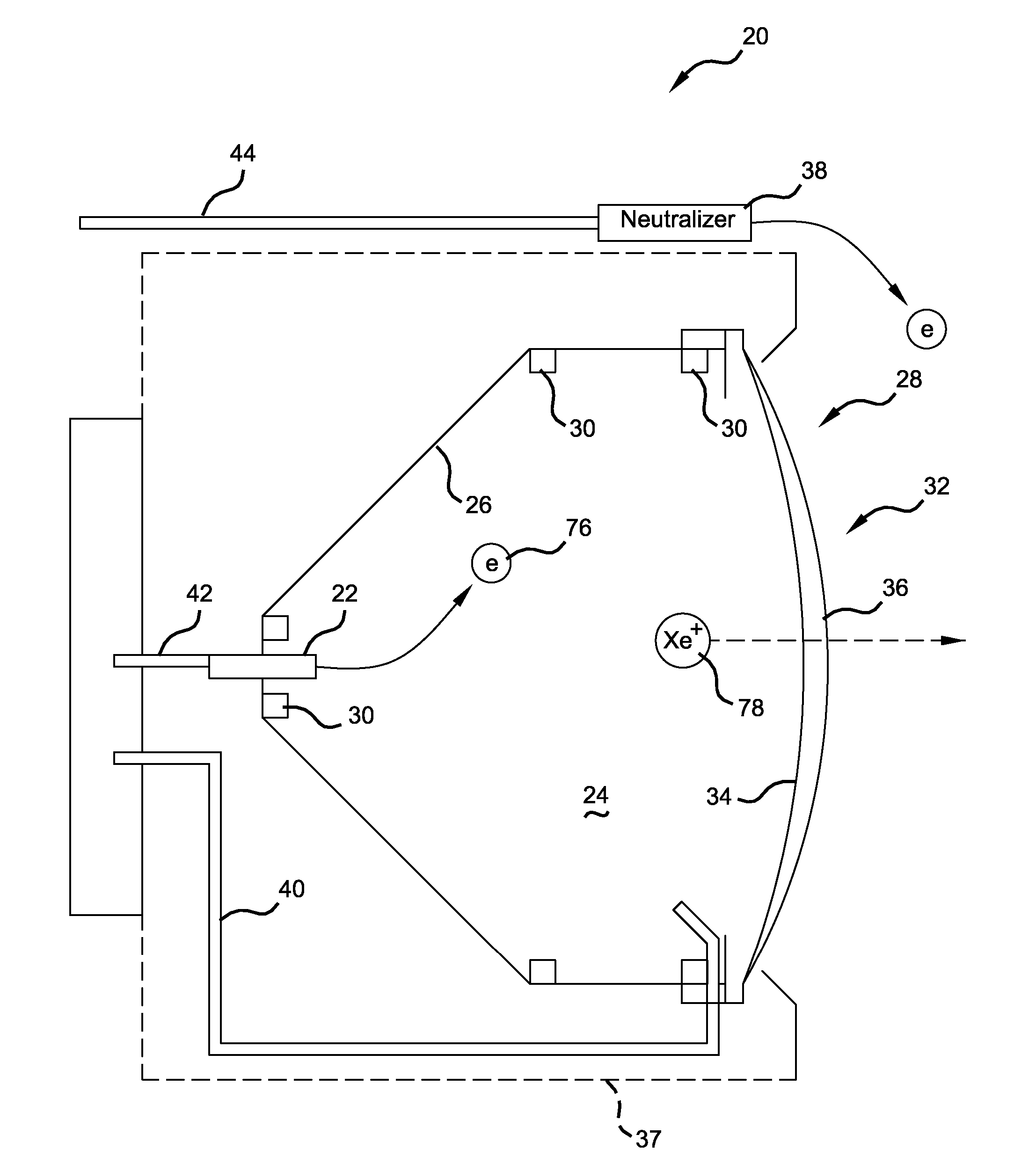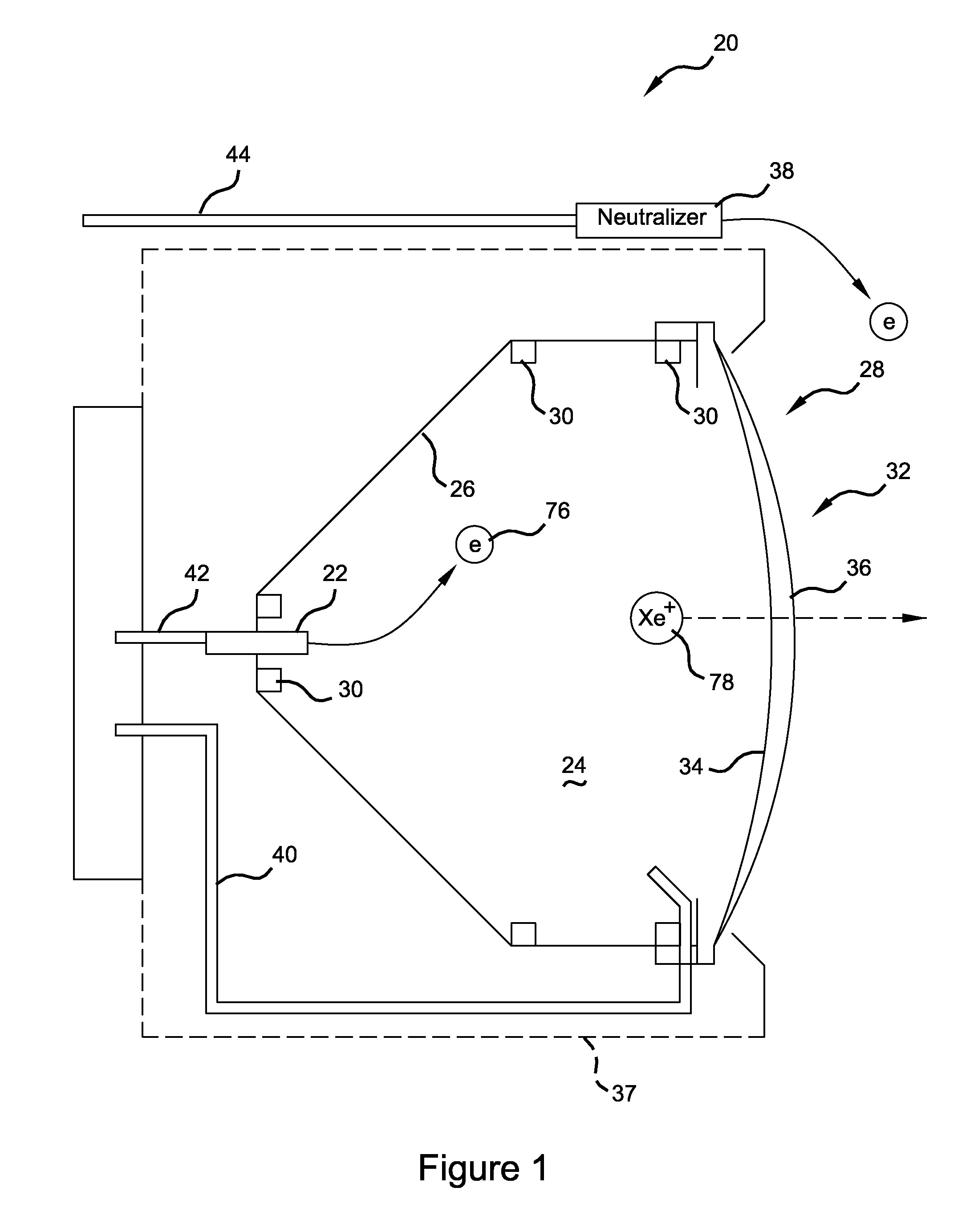Gas-fed hollow cathode keeper and method of operating same
a hollow cathode keeper and gas-fed technology, which is applied in the field of gas-fed hollow cathode keeper and the method of operating same, can solve the problems of the same lifetime limitations and potential failure mechanisms, the ion thruster's ion thruster's ion thruster cannot meet the 7-14 year mission requirement, and the molybdenum keeper dca can only last 3 years
- Summary
- Abstract
- Description
- Claims
- Application Information
AI Technical Summary
Benefits of technology
Problems solved by technology
Method used
Image
Examples
Embodiment Construction
[0031] The following description is merely exemplary in nature and is not intended to limit the present teachings, application, or uses. It should be understood that throughout the drawings, corresponding reference numerals indicate like or corresponding parts and features (e.g., 20, 120, 220, etc.).
[0032] A typical ion thruster 20 is schematically illustrated in FIGS. 1-3 and 5. Ion thruster 20 includes a cathode 22 which is operable to generate electrons that are discharged into a discharge chamber 24. Discharge chamber 24 includes a discharge chamber wall 26 and an opening 28 through which ions are discharged. Discharge chamber wall 26 acts as the anode for ion thruster 20. A plurality of magnets 30 can extend around discharge chamber 24. Discharge chamber 24 typically has a cylindrical-conical shape (as shown) or a cylindrical shape. An extraction grid (ion optics) 32 extends across opening 28 of discharge chamber 24. Extraction grid 32 can be a two-grid system with a screen gr...
PUM
 Login to View More
Login to View More Abstract
Description
Claims
Application Information
 Login to View More
Login to View More - R&D
- Intellectual Property
- Life Sciences
- Materials
- Tech Scout
- Unparalleled Data Quality
- Higher Quality Content
- 60% Fewer Hallucinations
Browse by: Latest US Patents, China's latest patents, Technical Efficacy Thesaurus, Application Domain, Technology Topic, Popular Technical Reports.
© 2025 PatSnap. All rights reserved.Legal|Privacy policy|Modern Slavery Act Transparency Statement|Sitemap|About US| Contact US: help@patsnap.com



